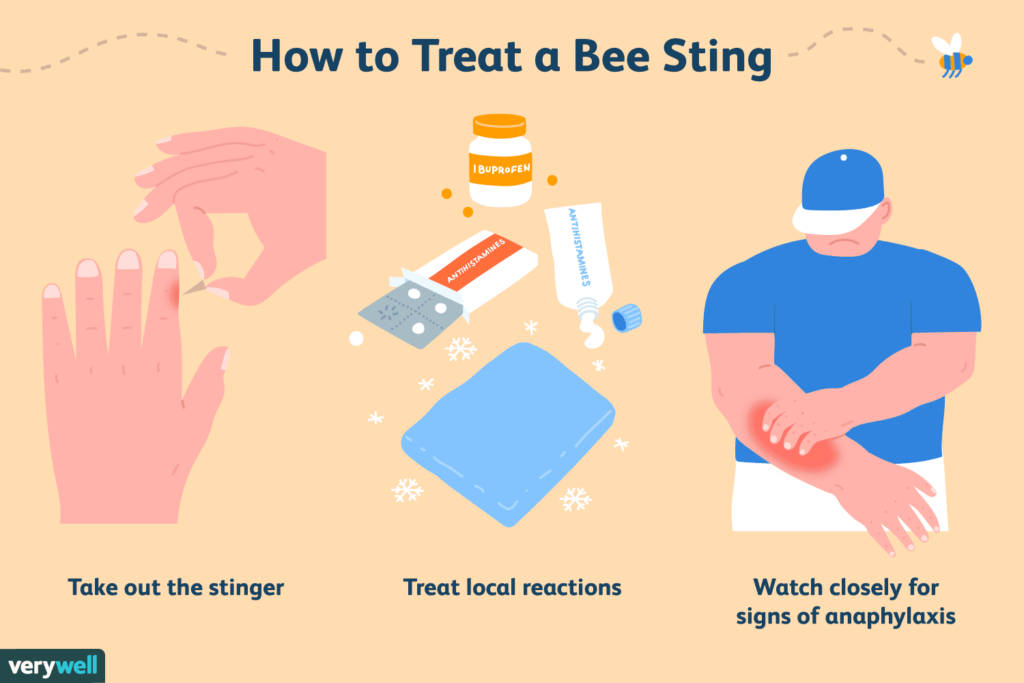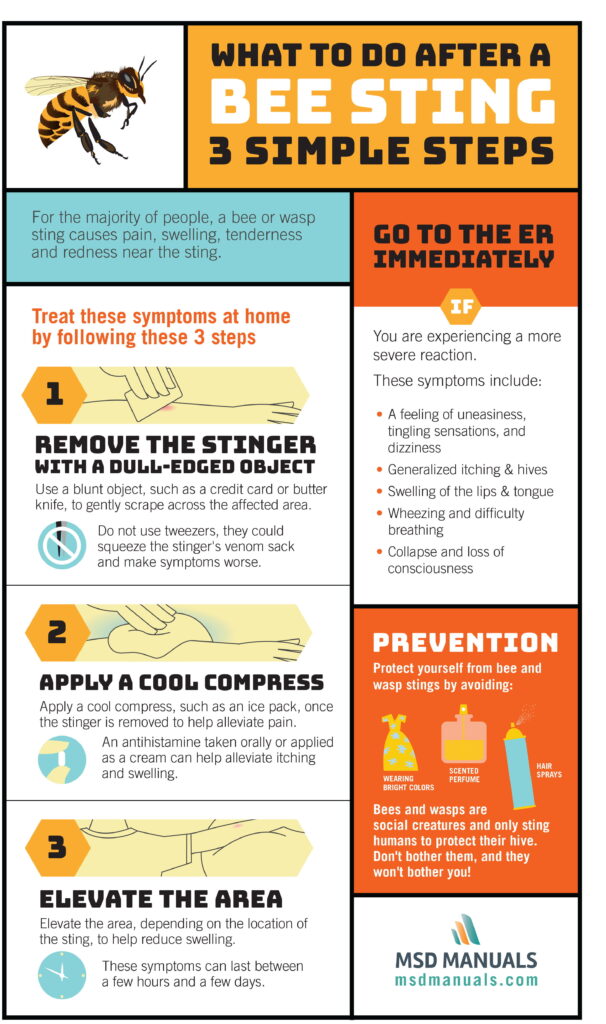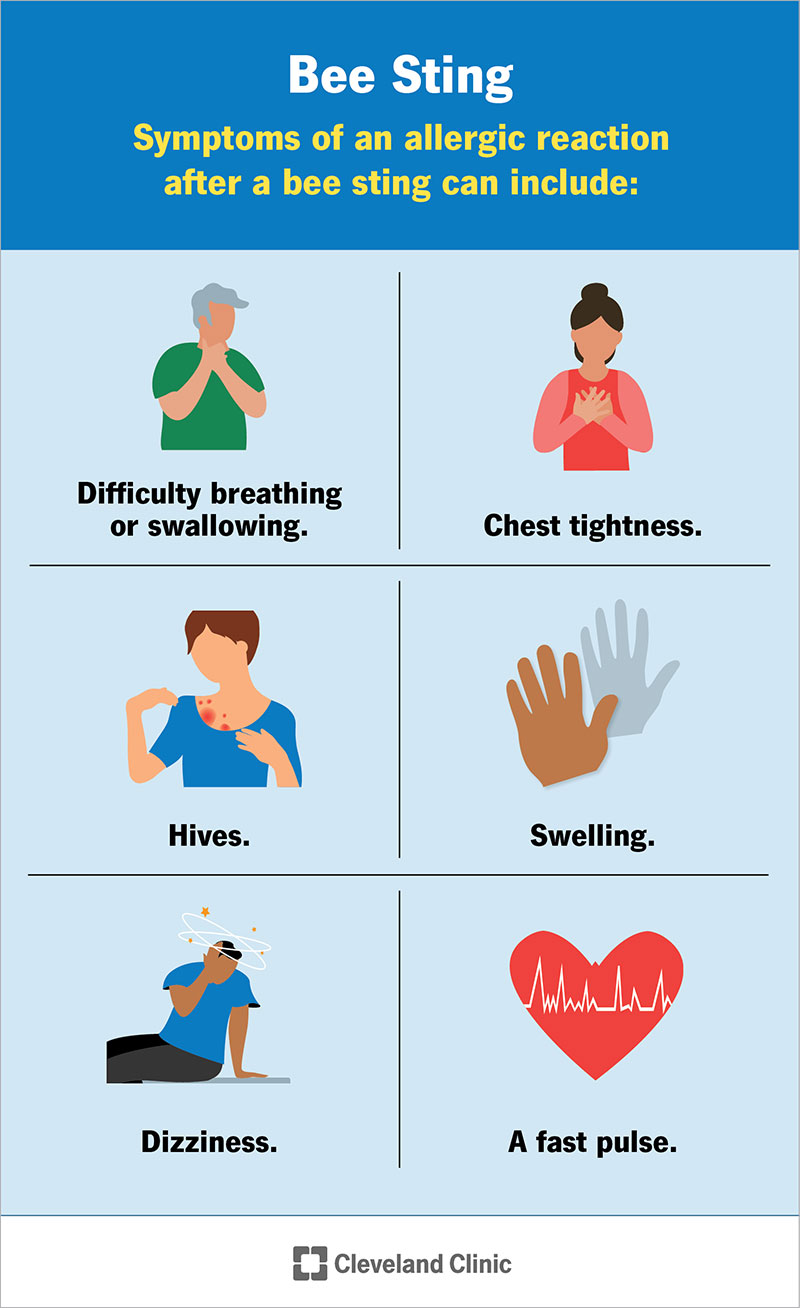
Bee stings can be a painful experience that often catches us off guard. Whether you encounter a curious bee while enjoying the outdoors or accidentally disturb a hive, knowing how to treat bee stings is essential. This article will provide you with simple and effective methods to alleviate the pain and swelling caused by a bee sting. With these easy-to-follow tips, you’ll be able to handle those pesky stings and get back to enjoying your day in no time.

Identify the bee sting
When you or someone you know gets stung by a bee, it is important to first identify the source of the sting. This will help determine the appropriate treatment and potential risks involved.
Recognize the symptoms
Bee stings often result in immediate pain, redness, and swelling at the site of the sting. However, some people may also experience other symptoms such as itching, a raised welt, or even a mild allergic reaction. It’s important to pay attention to these symptoms as they can help indicate the severity of the sting.
Determine if it is a honeybee or wasp sting
Differentiating between a honeybee sting and a wasp sting can also be essential in understanding how to treat the sting. Honeybee stingers are barbed, meaning they get lodged in the skin and can leave behind the venom sac. On the other hand, wasp stingers are not barbed, and they typically do not leave a stinger or venom sac behind.
Remove the stinger
Removing the stinger as quickly as possible is crucial in minimizing the amount of venom that enters your body.
Scrape or flick the stinger out
To remove a honeybee stinger, gently scrape the area with a credit card or your fingernail. Avoid using tweezers or squeezing the stinger because it can force more venom into your system. Flicking the stinger out with your finger can also be an effective method.
Avoid squeezing the venom sac
When removing a honeybee stinger, be careful not to squeeze the venom sac, as it can release more venom into your body. Simply focus on removing the stinger itself without applying excessive pressure to the area.
Clean the affected area
After removing the stinger, it’s essential to clean the affected area to prevent infection or further irritation.
Wash the sting site with soap and water
Using mild soap and lukewarm water, gently cleanse the area surrounding the bee sting. Remove any dirt or debris that may be present. This simple step helps reduce the risk of infection and aids in soothing the sting.
Avoid using harsh chemicals or alcohol-based products
It is important to avoid using harsh chemicals or alcohol-based products to clean the bee sting. These substances can further irritate the skin and delay the healing process. Stick to gentle soap and water for cleaning purposes.
Reduce pain and swelling
Bee stings can be painful and result in localized swelling. To alleviate these symptoms, there are a few strategies you can try.
Apply a cold compress
Placing a cold compress, such as an ice pack or a washcloth soaked in cold water, on the sting site can help reduce both pain and swelling. This cold therapy constricts the blood vessels and numbs the area, providing relief.
Take over-the-counter pain relievers
If the pain and swelling persist, you may consider taking over-the-counter pain relievers such as acetaminophen or ibuprofen. Be sure to follow the recommended dosage and consult with a healthcare professional, especially if you have any underlying medical conditions.

Relieve itching and irritation
Bee stings often cause itching and irritation, which can be quite bothersome. Fortunately, there are a few remedies to help alleviate these symptoms.
Use a hydrocortisone cream or ointment
Applying a hydrocortisone cream or ointment to the sting site can help relieve itching and reduce inflammation. These over-the-counter topical medications are known for their anti-inflammatory properties and can bring relief to the affected area.
Apply a paste of baking soda and water
Creating a paste by mixing baking soda with water and applying it to the bee sting can also help relieve itching and irritation. Baking soda has alkaline properties that can neutralize the acidic venom and soothe the skin.
Manage allergic reactions
While most bee stings only result in localized reactions, some individuals may experience allergic reactions. It is important to be aware of potential signs of anaphylaxis and take necessary precautions.
Monitor for signs of anaphylaxis
If you or someone you know has a history of severe allergic reactions to bee stings, it is crucial to monitor for signs of anaphylaxis. These symptoms may include difficulty breathing, swelling of the face or throat, dizziness, and a rapid heartbeat. If any of these symptoms occur, seek immediate medical attention.
Administer an epinephrine auto-injector if necessary
In severe cases of allergic reactions, an epinephrine auto-injector, such as an EpiPen, may be necessary. If an individual with a known allergy to bee stings carries this device, follow the instructions provided and administer the epinephrine injection promptly.
Seek medical attention
While most bee stings can be managed at home, there are situations where medical attention should be sought.
If the person has a history of severe allergic reactions
If someone who has been stung by a bee has a history of severe allergic reactions, it is always recommended to seek medical attention as a precautionary measure. Healthcare professionals can evaluate the situation and provide appropriate treatment if necessary.
If symptoms worsen or persist for more than a few days
If the symptoms of a bee sting worsen or persist for more than a few days, it may be an indication of an infection or an allergic reaction that requires medical attention. In such cases, it is best to consult a healthcare professional for further assessment and treatment.
Prevent bee stings
Although getting stung by a bee can sometimes be unavoidable, there are steps you can take to reduce the risk.
Wear protective clothing when in bee-infested areas
When spending time in areas known to be populated by bees, such as gardens or parks, consider wearing long sleeves, pants, and shoes to minimize exposed skin. Additionally, wearing a hat and using a beekeeper’s veil or netting can provide additional protection.
Avoid wearing bright-colored clothing or floral fragrances
Bees are naturally attracted to bright colors and floral scents. To reduce the likelihood of bee stings, opt for more muted colors and avoid wearing perfumes or scented lotions that may attract them.

First aid precautions
While treating a bee sting, it is important to maintain a calm and relaxed attitude. Panicking or making sudden movements can potentially provoke more bees and increase the risk of additional stings.
Do not scratch or rub the sting area
Although it may be tempting to scratch or rub the bee sting to relieve itching, it is essential to avoid doing so. Scratching can further irritate the area and potentially introduce bacteria, increasing the risk of infection.
Home remedies
In addition to the treatments mentioned earlier, there are a couple of home remedies that may provide relief.
Apply aloe vera gel
Aloe vera gel is known for its soothing properties and can help alleviate pain and reduce inflammation caused by bee stings. Gently apply a thin layer of aloe vera gel to the affected area for cooling relief.
Use a cold tea bag compress
Another home remedy for bee stings is to apply a compress made from a cold tea bag. Simply place a wet tea bag in the refrigerator for a few minutes, and then apply it to the bee sting. The natural tannins found in tea have anti-inflammatory properties that can provide temporary relief.
In conclusion, while temporarily painful and uncomfortable, bee stings can be effectively managed with simple steps and treatments. By identifying the sting, removing the stinger properly, cleaning the area, and following various remedies, you can alleviate pain, reduce swelling and itching, and prevent further complications. It is vital to monitor for allergic reactions and seek medical attention if necessary. Remember to take precautions to avoid bee stings and always keep a calm demeanor when dealing with these tiny, but sometimes pesky, insects.

